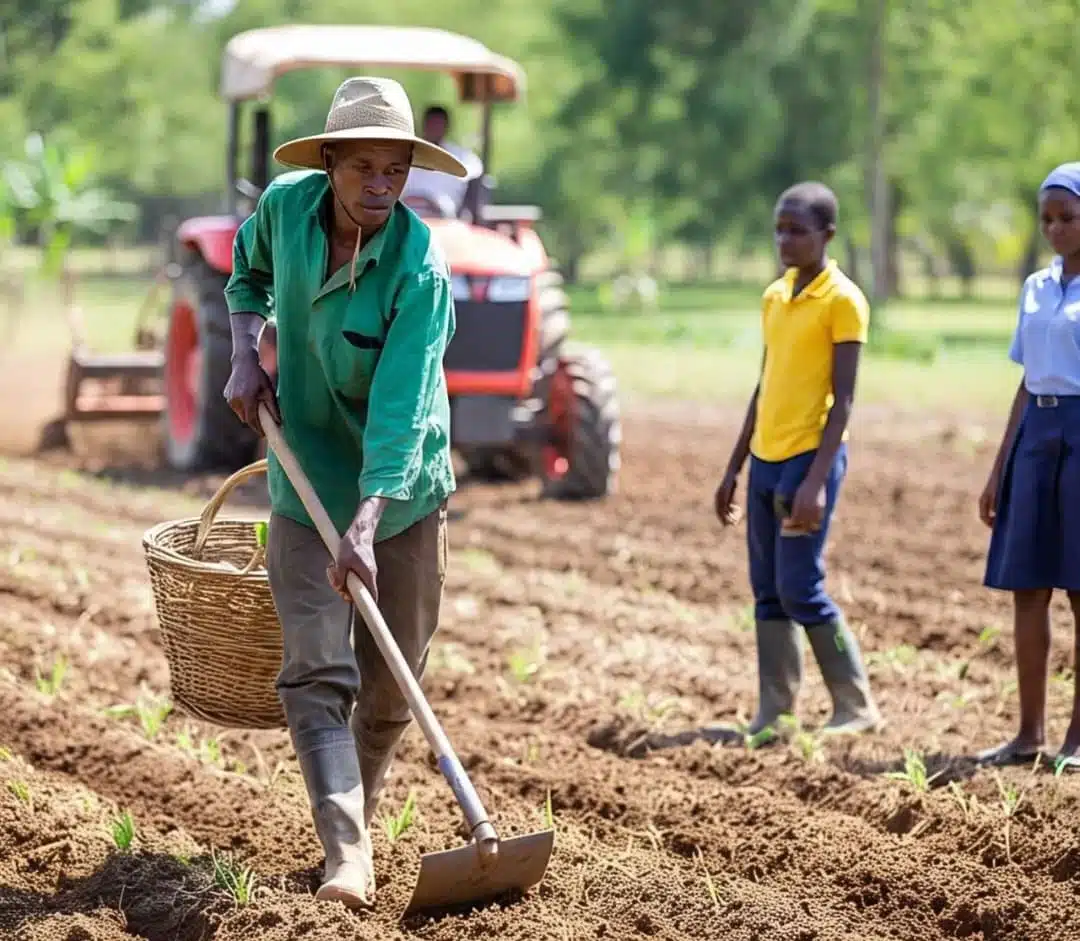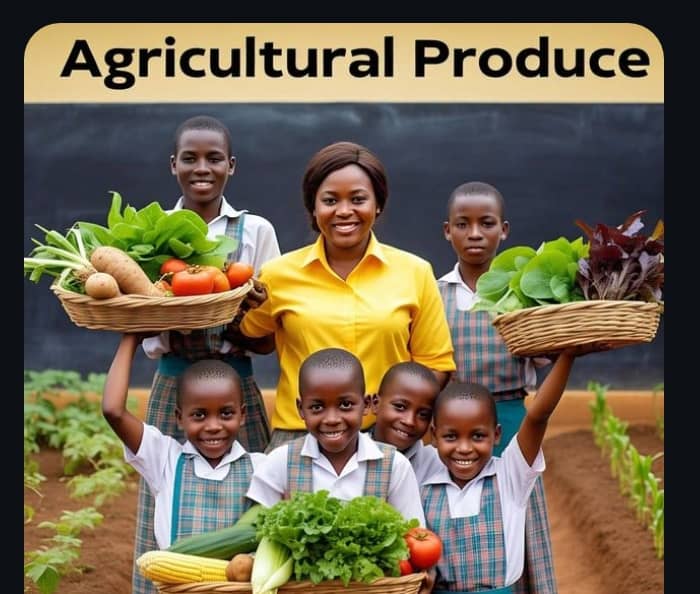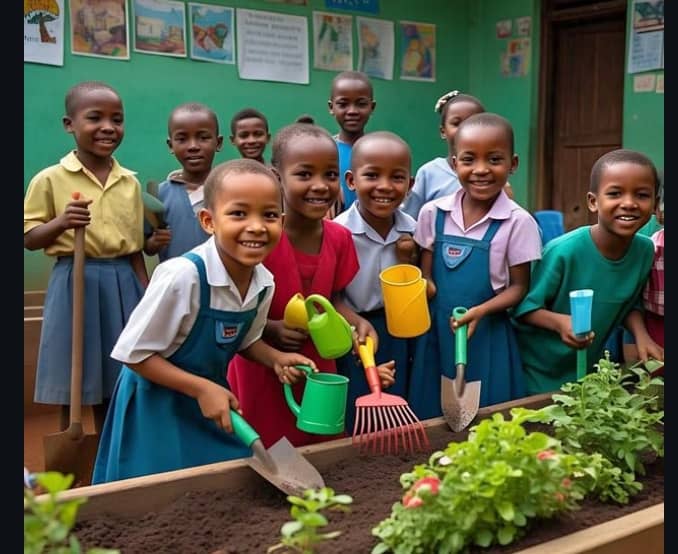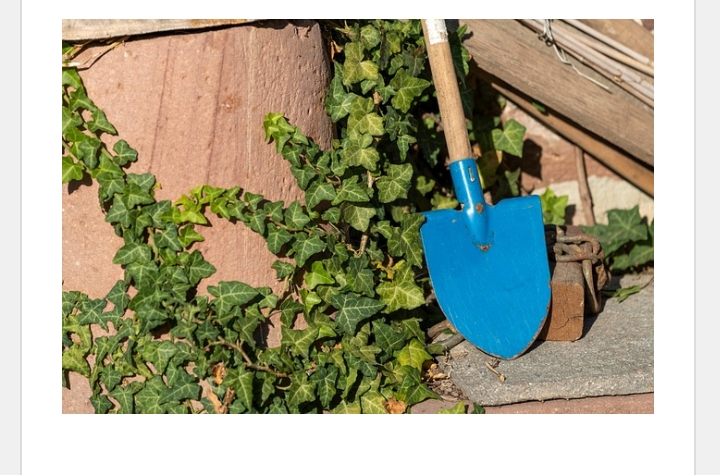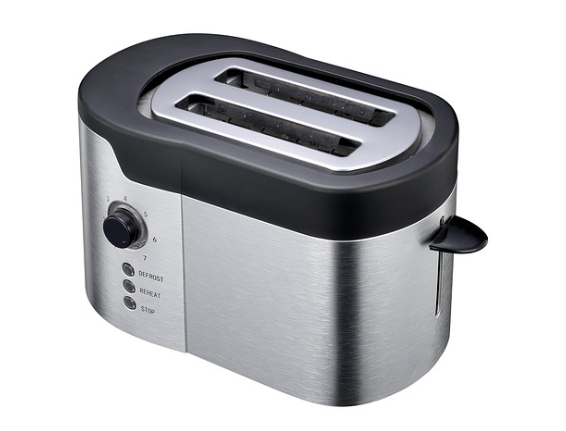Primary 1 Vocational Aptitude Third Term lesson notes
Week 9: Gardening Tools, Names, and Their Uses
Introduction
Behavioral Objectives
By the end of this lesson, students will be able to:
-
Identify common gardening tools.
-
Explain the function of each gardening tool.
-
Recognize the importance of using the right tool for different gardening tasks.
-
Appreciate the role of tools in making work easier and more efficient.
Keywords and Definitions
-
Gardening Tools: Instruments used for planting, weeding, and maintaining a garden.
-
Shovel: A tool with a broad, flat blade used for digging.
-
Rake: A tool with a long handle and a wide head used for gathering leaves or smoothing the soil.
-
Hoe: A gardening tool used for breaking up soil and removing weeds.
-
Watering Can: A container used for watering plants.
Set Induction / Entry Behaviour
The teacher walks into the class holding a small watering can and a rake. As the students stare, she asks, “What do you think these are used for?” The room buzzes with excitement. Little Kemi raises her hand and says, “Watering flowers!” while Tunde adds, “It’s for cleaning the garden.” The teacher smiles, “Great guesses, but today, we’re going to learn what these tools are really for and why they are so important in making our gardens grow healthy and strong.”
Building Background Knowledge
In our community, everyone has a garden—whether it’s for food or just for beauty. The children can often be seen playing around the gardens, watching their parents or grandparents using tools. From Aunt Ngozi who runs the village flower garden to Uncle Obi who grows maize, gardening tools are everywhere. It’s something the children can easily relate to—tools that make life easier and more productive.
Embedded Core Skills
-
Critical Thinking: Analyzing why different tools are needed for different jobs.
-
Problem Solving: Figuring out which tool is the best for a particular gardening task.
-
Observation: Watching the correct use of each tool.
-
Communication: Describing tools and their functions to peers.
Main Content
Gardening Tools and Their Uses
In this section, the teacher will introduce the four main gardening tools commonly used in Nigerian communities. They will be explained with both pictures and a classroom demonstration.
-
Shovel
-
Use: A shovel is great for digging holes. Imagine planting a tree; you need a shovel to dig a hole big enough to fit the roots.
-
Story: “Remember the day we planted the cassava in the garden? That was the day we needed the shovel to dig deep holes for the roots.”
-
-
Rake
-
Use: A rake is used to gather fallen leaves or smooth the soil.
-
Story: “When we go to Aunt Ngozi’s flower garden, she always uses a rake to tidy up the ground. It’s important because it helps us gather the leaves without messing up the plants.”
-
-
Hoe
-
Use: A hoe is used to break up soil and remove weeds.
-
Story: “Uncle Obi uses the hoe on his farm, especially when he wants to remove weeds that might hurt the crops.”
-
-
Watering Can
-
Use: A watering can is used to pour water on plants.
-
Story: “The watering can is like the lifeblood for plants. It brings them the water they need to grow. Just like how we need water to live!”
-
Class Discussion – 10 FAQs
-
Student: “Miss, why do we need the rake to gather leaves? Why can’t we just pick them up?”
Teacher: “Good question, Tolu! The rake helps us gather more leaves at once, and we don’t have to bend down so much. It saves time and keeps the garden looking neat.” -
Student: “What if we don’t have a hoe?”
Teacher: “That’s tricky! Without a hoe, you’ll find it hard to remove weeds. You could try using your hands, but that takes longer. A hoe helps the process go faster.” -
Student: “Is the watering can only for flowers?”
Teacher: “Not at all! We use watering cans for all kinds of plants—vegetables, flowers, even trees!”
10 Fill-in-the-Blank Questions (Objective)
-
The __________ is used for digging holes in the garden.
a) Hoe
b) Shovel
c) Rake
d) Watering Can -
__________ helps to gather leaves and smooth the soil.
a) Hoe
b) Shovel
c) Rake
d) Watering Can -
__________ is used for watering the plants.
a) Hoe
b) Shovel
c) Rake
d) Watering Can -
The __________ is used for breaking up soil and removing weeds.
a) Hoe
b) Shovel
c) Rake
d) Watering Can -
Which tool would you use to plant a tree?
a) Rake
b) Hoe
c) Shovel
d) Watering Can -
__________ is useful for picking up large amounts of leaves at once.
a) Hoe
b) Shovel
c) Rake
d) Watering Can -
A __________ is used to make the soil softer and easier to plant in.
a) Hoe
b) Shovel
c) Rake
d) Watering Can -
__________ helps us water plants without making a mess.
a) Hoe
b) Shovel
c) Rake
d) Watering Can -
What tool do we use to remove weeds from our garden?
a) Hoe
b) Shovel
c) Rake
d) Watering Can -
The __________ is a tool that makes digging easier.
a) Hoe
b) Shovel
c) Rake
d) Watering Can
Evaluation Questions (Theory)
-
What is the main function of a rake in a garden?
-
Why is a hoe necessary for farming and gardening?
-
How does a watering can help the plants grow?
-
Can you name any other tools used in the garden?
-
Why do we need to use the right tool for different gardening tasks?
-
What happens to a garden if the tools are not used correctly?
-
Describe a time when you saw your parents or neighbours using gardening tools.
-
How would you plant a flower without a shovel?
-
What do you think would happen if we didn’t water our plants?
-
How do you think gardening tools make work easier for farmers?
Assessment
-
Teacher’s Activity: “Let’s walk around and see how many of you can identify these tools in our classroom or garden.”
-
Learners’ Activity: “Children, get into groups, and each group will show how they would use a rake, hoe, or shovel in the garden.”
Conclusion
The teacher wraps up with a heartfelt reflection: “In life, just like in the garden, we need the right tools to grow. A garden doesn’t grow overnight; with patience, hard work, and the right tools, everything grows stronger, just like you!” The children smile, remembering their own small gardens at home.
- Places of Religious Worship in Nigeria – A Cultural Guide for Primary 1
- Rights of Citizens Vocational Aptitude Primary 1 Third Term Lesson Notes


